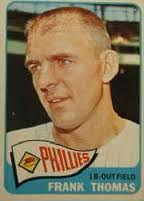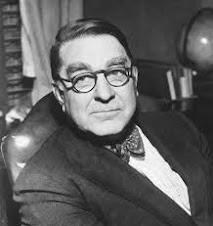The subtitle of the above named book that was written by
Bruce Markusen and published in 2006 is
 |
| Look inside at Amazon |
"Roberto Clemente and the 1971 Pittsburgh Pirates."
Markusen works for the
Baseball Hall of Fame, and can be found contributing to the
http://baseballguru.com web site. It's not a great book, but a useful one for fans and historians.
Markusen’s book was one I read in late October, while on vacation, and it struck me how baseball had missed a great opportunity to celebrate a significant anniversary.
What was significant?
Well, if you’re old enough, or enough of a baseball historian, or
Pittsburgh Pirates historian, the nine players that were written into the line up of the game Pittsburgh played against the
Philadelphia Phillies on September 1, 1971 will supply you with the answer.
Those 9 names in the lineup were:
Rennie Stennett, 2B
Gene Clines, CF
Roberto Clemente, RF
Willie Stargell, LF
Manny Sanguillen, C
Dave Cash, 3B
Al Oliver, 1B
Jackie Hernandez, SS
Dock Ellis, P
Do you have the answer now?
I promise that if you read long enough (or just scan down) the answer will be revealed.
In fairness and in the interest of full disclosure, I didn’t know, nor did I grasp the significance in the title of the book when I first looked at the title on
Amazon. I was looking for books on baseball, and leaning towards histories of National League teams in the 1960’s and 1970’s. Those old Pirate teams with Roberto Clemente and Willie Stargell was one of my favorite clubs for many years. I still find myself rooting for them now, though I was
not a fan of the team during the
Barry Bonds and
Bobby Bonilla years.
 |
| Clemente won 4 NL batting titles |
Just as Bonds will go down in history as one of the most polarizing ball players of all time, Clemente has gone down as one of it’s most revered. I pretty much agree with that, especially with what I know about Clemente. Based on the many accounts I have heard and read, he was a great human being, and maybe a better man than ball player – and he was a fantastic ball player. Clemente was one of the best hitters in baseball, hitting .291 or better for 14 straight years, and had the best outfield throwing arm I have ever seen.
Clemente was a very intelligent, thoughtful, and proud man, and felt (justifiably) insulted and marginalized by the media during most of his career. He wanted to be called Roberto, but was generally called Bob or Bobby for many years, and was often quoted by the press in that
phonetically-geeky (and insulting) way old beat writers had when jotting down the words of Latin-American player with limited English. Call it the
"Beisbol been bery bery goo to me syndrome." Few wrote about all the good things he did when back home in Puerto Rico, and what a great teammate he was. It took Clemente’s tragic death for most of us to learn about what a great man he’d been to the end.
When Clemente died, Willie Stargell was thrust into the role of being a leader of the team. He soon adapted his "Pops" persona, and did an excellent job. He was smart, quotable, and funny with the media. He was a well-liked teammate and the primary judge in the Pirate locker room's kangaroo court on a consistently winning team for the rest of the ‘70’s. Pops was named co-MVP (with
Keith Hernandez) of the National League in ’79. Willie was an elder (38) statesman by then, and sentiment combined with a hot-hitting September to carry him to share in an award he really didn’t deserve.
He did, however, absolutely deserve the two MVP’s he received in the NLCS and World Series that year. In 10 games that post-season, Stargell hit .414, with 9-runs, 5-homers, and 13-RBI. Multiply those last 3 numbers by 16 (to project a full season of play), and you’d have a season of 90 homers and 208 RBI.
 |
| The ump says play ball, not work ball. |
Not too shabby. Looking at those numbers I can’t help but wonder why (Baltimore manager)
Earl Weaver never ordered any of his pitchers to walk Willie intentionally? He drew zero walks in the series.
In a further aside, Willie Stargell did the most
intentionally funny things I have ever seen happen during a MLB game.
Sometime during a game in the 1970’s, Willie was running to second base when he realized that the ball was going to badly beat him to the bag. Willie decided to pre-emptively slide into second base, and then perform a 'pop-up' a few feet from the bag and signal the ump for a time out! I saw this sequence replayed on TV many times over a number of years, and it never fails to crack me up, especially when Willie smiles as he’s tagged out.
But what about those 1971 Pirates,
The Team that Changed BASEBALL?
Once I checked the book out a bit before buying it, I did recall that on September 1, 1971, the Pittsburgh Pirates fielded
the very first lineup in Major League Baseball history will all black and/or Latin players. More than 24 years after
Jackie Robinson’s MLB debut, a ball club finally broke that last, unofficial barrier, and fielded a team without a white face.
What can’t be overlooked in this story is that Pittsburgh was a very good team that season, winning the pennant and beating a great
Baltimore Oriole’s club that won it’s second AL pennant in a row, and would win again in 1972.
Did it have to be a very good team that could be
allowed to not field a white team for Pittsburgh?
The story is that for years there was an informal quota system in MLB, that teams were "allowed" to have only so many non-white ball players, and this was the case for a long period of time after Robinson broke in. Gradually, as it became apparent in the late 1950’s that most of the superb black baseball talent was signing with or being traded to National League teams such as the Giants, Pirates, Braves, Reds, Dodgers and Cardinals, and that those teams were winning championships, things began to change. The National League began to win almost every All Star game, and this was when the game was a matter of league honor to most players -- they played the game to win every year.
When
Frank Robinson was traded from the Reds in the NL to Baltimore prior to the 1966 season, few could have predicted that the Orioles would become a dynasty, with Robby winning the Triple Crown, and leading Baltimore to a World Series Championship. All told, Robinson was a member of four Baltimore pennant winners and two World Series winners.
(Imagine Frank Robinson playing on those superb Reds teams of the late 1960's and 1970's with Morgan, Bench, Rose, and Perez?) Robby played a National League style of ball his entire career – fast, hard and aggressive baseball that was only to ramp up once all the new stadiums were built with fast-track artificial turf. Speed had once again become a premium and a needed ability in ball players.
The significance of what happened on September 1, 1971 was not lost on the Pirate players, and to a man they were happy and proud for themselves, and their club.
Many years prior, during the period of time when the Negro Leagues were going strong, Pittsburgh often had two Major (Negro) League teams – the
Pittsburgh Crawfords and the
Homestead Grays. The city had a history of being able to watch the excellent style exhibited by all the great black players of the time – and thousands of folks did so, the Grays and Crawfords often outdrawing the MLB Pirates.
By the early 1950’s, the Pirates were arguably the worst team in the National League. After
Branch Rickey took over the GM duties in 1951, the team began to acquire some talented players, and it was Ricky that drafted Clemente when he was left off the Dodgers roster after the 1954 season.
The Pirates still finished last or next-to-last for 7 of the next 8 years, but managed a second place finish in 1958, and won the World Series when Mazeroski left Yogi watching his shot leave the yard in 1960.
Of course, Rickey was long gone by then, and the Pirates could never manage more than a couple of third-place finishes in the 1960’s, even though they had some good hitting teams in the decade.
Then, starting with a (NL East) division win in 1970, the Pirates won a total of 6 divisions, 2 pennants, and two World Series in the 1970’s, ending a great run with the "We are family" 1979 team, where they once again beat Baltimore.
Pittsburgh managed just two 2
nd place division finishes in the 1980’s, before Bonds and the boys ran off three straight division titles from 1990 to 1992, and ’92 is the last year the club finished with a record better than .500.
It looks like the current Pirates are making some progress, and had a nice start to the 2011 season, only to crumble badly in the second half. The have some very nice young hitters, and I am hoping that just as the good-hitting Pittsburgh team of the ‘60’s eventually found enough pitching to win, so will this group.
It would be nice to see, as I imagine we’d get to hear more about the team that changed baseball, a little more than 40 years ago, and maybe get to see Willie signal for a time out, one more time?
 |
| The 1971 Pittsburgh Piartes |









































